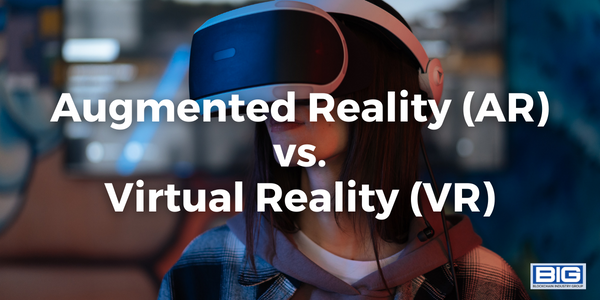
Augmented reality (AR) and virtual reality (VR) are two technologies that enable the integration of digital information and experiences into the physical world. Augmented reality technology allows users to see the real world and augment it with digital information and experiences, while virtual reality technology creates a fully immersive digital environment that blocks out the real world. Both technologies have a wide range of applications, including gaming, entertainment, education, and training.
As augmented reality (AR) and virtual reality (VR) continue to evolve and gain traction in various industries, there is ongoing debate as to which technology will be dominant in the future.
Here are the top arguments for which technology, or combination thereof, will dominate.
Arguments for augmented reality dominance:
- Increased accessibility: One argument for augmented reality dominance is that it is more accessible than virtual reality. Augmented reality technology can be accessed through smartphones and other portable devices, whereas virtual reality typically requires specialized equipment such as a headset. This increased accessibility could make augmented reality more appealing to a wider audience.
- Greater potential for practical applications: Another argument for augmented reality dominance is that it has greater potential for practical applications. For example, augmented reality could be used to enhance training programs, facilitate remote collaboration, or provide real-time information and guidance in various industries such as healthcare, manufacturing, and education.
Arguments for virtual reality dominance:
- Increased immersion: One argument for virtual reality dominance is that it allows for a higher level of immersion than augmented reality. Virtual reality technology can create a fully immersive experience that blocks out the real world, allowing users to fully engage with the virtual environment. This increased immersion could make virtual reality more appealing for certain types of experiences such as gaming, entertainment, or education.
- Greater potential for creative expression: Another argument for virtual reality dominance is that it has greater potential for creative expression. Virtual reality technology can allow users to create and explore fully immersive and interactive environments, which could be appealing for artists, designers, and other creatives.
10 Ways the Metaverse Will Revolutionize Entertainment
—
20 Augmented Reality and Virtual Reality Use Cases
—
A New Reality: Rise of the Metaverse
Arguments that the two technologies are synergistic:
- Complementary strengths: One argument is that the two technologies have complementary strengths. While VR offers a high level of immersion and the ability to create fully immersive and interactive environments, AR offers increased accessibility and the ability to augment the real world with digital information and experiences. By combining these strengths, AR and VR could offer a more versatile and comprehensive range of experiences.
- Synergy in practical applications: Another argument is that the two technologies could work together to enhance practical applications in various industries. For example, AR could be used to provide real-time information and guidance in a training program, while VR could be used to create a fully immersive simulation environment. By combining these technologies, organizations could create more effective and engaging training programs.
- Increased flexibility: A combination of AR and VR could also offer increased flexibility in terms of the type of experiences that can be created. For example, AR could be used to create interactive experiences that can be accessed in a variety of settings, while VR could be used to create fully immersive experiences that require specialized equipment. This increased flexibility could make AR and VR more appealing to a wider audience.
Overall, it is most likely that a combination of AR and VR could offer a wide range of possibilities in terms of the types of experiences that can be created. By leveraging the complementary strengths of these technologies, organizations and individuals could create more versatile and comprehensive experiences that appeal to a wide audience.



